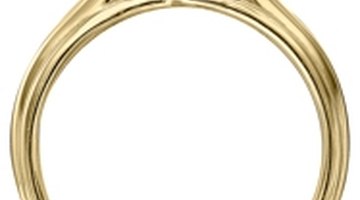How Are Gold Rings Made?
Many jewelry manufacturers use scrap metal in the first step in the creation of gold rings, as part of the industry movement toward sustainability and environmentalism (gold mining mars natural features, uses deadly chemicals and is generally wasteful).

Gold Rings: From Scrap to Finger
This article will discuss the creation of a gold ring from scrap origins all the way to sale at a jewelry store. The processes listed are not the only way to create jewelry, but some of the most common.
Secondary Refining of Scrap Metal
First, scrap metal is melted down and granulated into small, cornflake-shaped pieces. Cornflakes are desirable over other forms because the surface area of the gold pieces is high. These pieces are put through the Miller process to refine them into approximately 98 to 99 percent pure gold. The Miller process uses chlorine, which reacts with other metals leaving only gold, producing mostly fine gold and chloride. This mostly fine gold can be put through another round of refining, such as the Wohlwill process, which uses electrolysis and chloroauric acid to purify gold beyond 99.99 percent.
Lathe and Settings
Next, workers detach a blank from an ingot, and put the blank into a lathe. Lathes scrape away metal and turn the hunk of metal quickly, to create a perfect oval and structure. Once the inside of the ring is carved out, the piece of metal is reversed in the machine, and the blade carves out the outside of the ring. Gold scraps are collected and sent back to refining, to become purified again--rarely do scraps not become contaminated by the factory floor. These new gold rings are smoothed and polished, and settings can be applied.
References
Writer Bio
Collin Fitzsimmons has been writing professionally since 2007, specializing in finance and the stock market. He serves as a financial analyst at AMF Bowling Centers, Inc. Fitzsimmons earned a bachelor's degree in economics from the University of Virginia.
Photo Credits
- Photo by Strong. http://hooverandstrong.com/catalog_images/SLC58_Y_P_187.jpg
- Photo by Strong. http://hooverandstrong.com/catalog_images/SLC58_Y_P_187.jpg
More Articles



